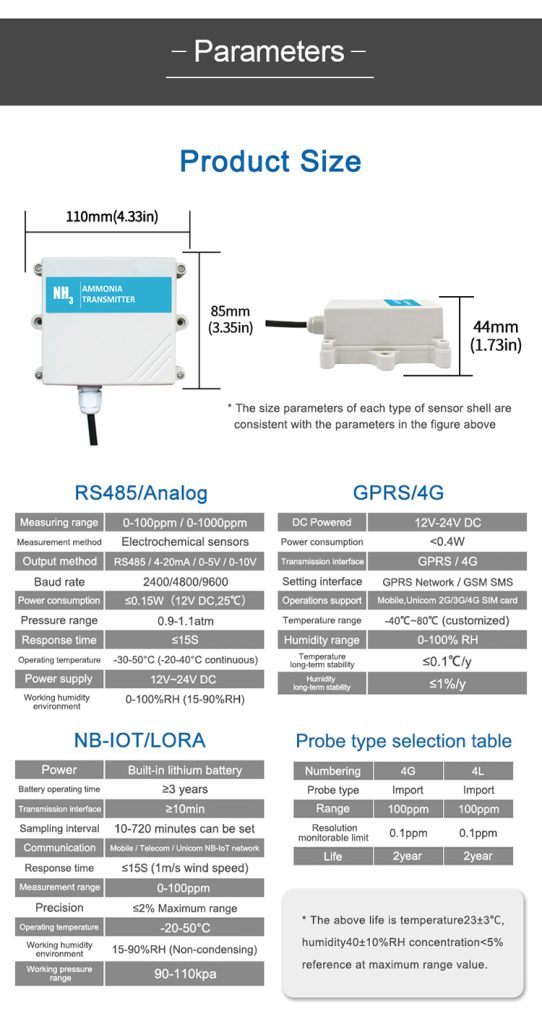Introduction
Ammonia is a common pollutant in the environment, originating from various sources such as agricultural activities, industrial processes, and vehicular emissions. Monitoring ammonia levels is crucial for assessing air quality, protecting human health, and preventing environmental degradation. Ammonia sensors play a vital role in detecting and quantifying ammonia concentrations in the air, water, and soil. This article explores the accuracy of ammonia sensors in environmental monitoring, highlighting their capabilities, limitations, and best practices for ensuring reliable measurements.
Understanding Ammonia Sensors

Ammonia sensors utilize different technologies to measure ammonia concentrations, including electrochemical sensors, optical sensors, and semiconductor gas sensors. These sensors work based on specific chemical reactions or physical interactions with ammonia molecules, producing electrical signals that are proportional to the ammonia concentration in the environment. The accuracy of ammonia sensors depends on factors such as sensor design, calibration, sensitivity, selectivity.
Factors Influencing Accuracy
Several factors can affect the accuracy of ammonia sensors, including cross-sensitivity to other gases, temperature and humidity fluctuations, sensor drift. Cross-sensitivity is a common issue in ammonia sensors, as they may respond to other gases present in the environment, leading to false readings. Maintaining proper calibration of sensors is essential to ensure accurate measurements, as sensor performance can degrade over time due to environmental exposure .
Calibration and Validation
Calibration is a critical step in ensuring the accuracy of ammonia sensors. Sensors should be calibrated using certified ammonia standards or calibration gases to establish a linear relationship between sensor output. Regular calibration checks and validation against reference instruments are necessary to verify the accuracy and reliability of sensor measurements. Additionally, sensor drift and response time should be monitored to detect any deviations from the expected performance.
Accuracy Testing and Performance Evaluation

Accuracy testing of ammonia sensors involves comparing sensor readings with reference measurements obtained from high-precision instruments or laboratory analysis. Performance evaluation metrics and response time are used to assess the reliability of sensor data. Field validation studies are essential to evaluate sensor performance under real-world conditions and different environmental settings, providing insights into sensor accuracy .
Best Practices for Improving Accuracy
To enhance the accuracy of ammonia sensors in environmental monitoring, several best practices can adopte:
- Regular calibration and maintenance of sensors to ensure optimal performance.
- Proper sensor placement in areas of interest to capture representative ammonia concentrations.
- Validation of sensor data through comparison with reference measurements or laboratory analysis.
- Monitoring environmental conditions and sensor drift to identify and correct measurement errors.
- Utilizing sensor networks and data fusion techniques to improve spatial coverage and data quality.
Conclusion
Ammonia sensor play a crucial role in environmental monitoring efforts to assess and mitigate ammonia pollution. While advancements in sensor technology have improved the accuracy and reliability of ammonia sensors, challenges remain in achieving high precision in ammonia concentrations. By understanding the factors influencing sensor accuracy, implementing best practices for calibration and validation, and addressing potential limitations, researchers and environmental monitoring agencies can enhance the effectiveness of ammonia sensors in detecting . Continued research and innovation in sensor technology will further improve the accuracy and reliability of ammonia sensors, supporting efforts environmental quality.